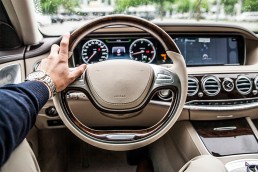Technology has moved a long road from being something that only tech enthusiasts would admire. It has become a mainstream phenomenon that drives consumer decision making. But as hardware advancements are becoming more and more commoditized, software is the growing force that influences which “smart” products consumer is going to buy. This is a domino effect that is affecting not just the electronics industry, but everything else, including the automotive.
Software is the new hardware
Many car manufacturers are already embracing this shift and have changed their approach from hardware development to software. The reasoning for this is straightforward: same as with smartphones, there are many players that are competing at the hardware level. They provide high performing devices that are cost efficient. Quite often, different OEMs use similar electronics hardware, which makes it very challenging for a car manufacturer to differentiate itself from others. Automotive Software, on the other hand, is a rapidly evolving industry, where smart, connected cars, are just starting to enter the market. Having the opportunity to become a market leader within this growing industry would create a substantial advantage for any OEM. In fact, according to a McKinsey report – 37% of consumers would switch a car OEM “if it was the only one offering full access to apps, data and media”. This is an 85% increase when compared to a previous year-over-year data, and is direct proof to a rapid shift in consumer behavior.
It’s all about the user experience
While hardware empowers and provides various functionalities to the car, it is the software layer that allows the user to engage with it. Users don’t see the motherboard or a SoC when using their car. They will see multiple screens, through which they interact with multiple car functions. The bigger the WOW effect those screens will be bringing to the user, the more likely the user will be considering a potential car for purchase. A good example for this is Tesla Motors. It offers a substantially large infotainment screen which in fact becomes the center of the car. This alone gives a feeling that the car has a large focus on software and digital experiences. Tesla’s main screen has Google Maps navigation, allows the user to control all the system functions, and even use Spotify to play music. But more importantly, it allows the user to install over the air (OTA) software updates to the whole car system. OTA updates enable cars to receive new features after the car has been purchased, such as autonomous driving, or increased acceleration speeds. It is a huge selling point, since this brings a continuously added value to the car. The user doesn’t just become a one-time buyer, but a loyal user of the OEMs software ecosystem.
This also allows car manufacturers to generate additional sales profits by offering new services and feature upgrades following the purchase of the car. Additionally, it boosts customer brand loyalty, as it creates a continuous conversation between the user and an OEM.
Software must be fast and have rich functionality
But, while the shift to software is important and valuable, it’s the user experience that should be taken into consideration. Remember, most of the potential car buyers use smartphones. And in 2017 smartphones are fast, have an ecosystem of apps, a minimal modern design, and provide over the air updates. The user will have an expectation that any smart device, including their new connected car, should be aiming for those standards.
Quality assurance & security
At the same time, OEMs should always keep in mind that safety for such systems is a high priority. Cars are not just a smart device, they are a transportation vehicle, and any software malfunction can lead to fatal results. Ensuring that there will be no bugs or errors in such systems is a must. Yet, the main concern are potential external attacks on the system: car manufacturers should ensure that external connections going to the car will be well protected, and that hackers will not be able to take over control of the car. Continuously releasing new security updates and ensuring that the car will execute those changes is, of course, another requirement for any “smart” car.
Final thoughts
Software is becoming a driving force that defines not only the way we buy electronics, but also automobiles. Providing state-of-the-art software solutions on all layers of the user experience is becoming a key factor that directly affects consumer’s car buying behavior. Car manufacturers are embracing that, and continue to increase their efforts to becoming industry leaders when it comes to in-car software experiences. From autonomous driving, to embedded software, and infotainment systems, it is very likely that companies like BMW, Daimler, or Toyota are going to grow their influence, becoming not just car manufacturers but also software companies.
Car makers and Tier-1 suppliers – is your storage software up to speed? We’ll help you find the right embedded storage solutions.


